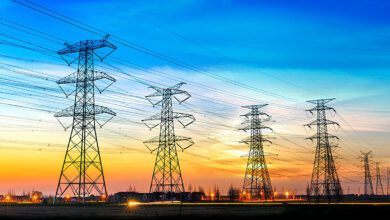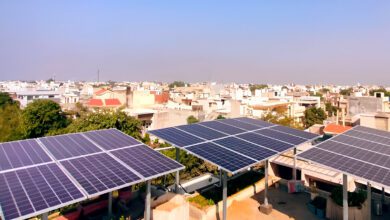
Bharat Bhut
The staggering take-up of solar power in India has led to the announcement of an ambitious climate plan at the COP26 conference in Glasgow. As the world is aiming to limit the global average temperature rise to 1.5°C with more than 100 countries making net-zero pledges at the recently concluded conference, the emphasis is now on the energy sector which contributes more than 70% of the global greenhouse gas (GHG) emissions. To counter that, renewable energy is set to rise, with solar power holding the key to keeping global warming in check. The renewable energy sector of India is currently the fourth most attractive market in the world.
Current Scenario

In June 2008, India announced its National Action Plan on Climate Change (NAPCC) with the National Solar Mission (NSM) as one of its key missions. The main objective is to position India as a global leader in solar energy by creating favourable policies for solar.
As of now, most of the major solar initiatives are based out of the southern part of India. However, stepping into 2022, current innovations and initiatives in the pipeline anticipate that the Northern part will outshine the Southern region in terms of maximum deployed solar PV capacity. Given the ease of land acquisition and other legal permits from the federal and state governments, gigantic solar power plants are in full gear, with a tremendous amount of domestic and international investment flowing into the industry. The Indian government has also created a National Green Corridor Program to allow renewable power to stream into the national grid network.
The Government of India has launched various schemes to encourage generation of solar power in the country like Solar Park Scheme, Canal bank & Canal top Scheme, Bundling Scheme, Grid Connected Solar Rooftop Scheme etc. India targets installing 280 GW of solar by 2030. The National Institute of Solar Energy has assessed the country’s solar potential to be about 748 GW, assuming 3% of the waste land area to be covered by Solar PV modules. The Ministry of New and Renewable Energy plans to commence Rooftop Solar Programme Phase II throughout the country, notably in rural regions, which aims to install 4,000 MW in the residential sector by 2022 with a provision of subsidy.
Way forward

Solar manufacturing in China taught many lessons to India, including the necessity of a long-term strategy. To tackle the economic slowdown and loss of jobs, the government is accentuating the need for India to become a self-reliant economy (Aatmanirbhar Bharat) and build a complete ecosystem to boost the domestic PV manufacturing industry.
Digitalization is expected to transform every aspect of the solar industry. More companies are trying to use machine learning and artificial intelligence to improve the commercial viability of their solar projects. The use of data, drones, robots, and software solutions in the renewable sector is an interesting trend, especially when homegrown countries are investing extensively in technology.
BCD will be implemented in April 2022, and the market will be a little slow in the initial months. Once the issue of price parity and acceptance with the new tax regime is resolved, the market will stabilize and the demand will be huge. Indigenous manufacturing will flourish and the government’s Make in India will have a massive real term impact. The industry will also see a higher inflow of FDI.
Challenges and Solutions in the solar sector – What’s Going On?

Despite all the hard work and endeavours, the solar sector in India continues to face a number of challenges that hinders our progress towards becoming a self-reliant solar-powered nation. While the potential of developing high-end equipment could be viewed as a prospect to enhance the quality and efficiency, the availability of land to establish manufacturing facilities remains to be a challenge. Addressing issues on utilization of resources, allocation of land, investment and financing could help make the most of opportunities.
The most significant challenge is the poor monetary condition of power distribution companies (DISCOMs). Most of them are owned by the state governments. Nearly all renewable energy is purchased by such DISCOMs, resulting in very long and unjustifiable payment cycles and compounded by problems with pending dues to generation companies. Alignment of state and central governments is expected with the New Electricity Act. Special RE transmission lines will also be installed.
At the national level, manufacturing capacity, investment in R&D, investor-friendly environment, skill development, low voltage grid connectivity of variable solar resource and regulatory decisions are major challenges to be resolved. Smart city mission and Digital India will play a key role in transforming the entire power system in the country. Development of off-grid systems that are ‘Grid ready’ for rural and remote areas, and making by-laws for new buildings for grid connected as ‘Rooftop ready’ should be the suggested goals for the future. If these initiatives are executed as envisioned, India is soon to become one of the world leaders in Solar Energy.












